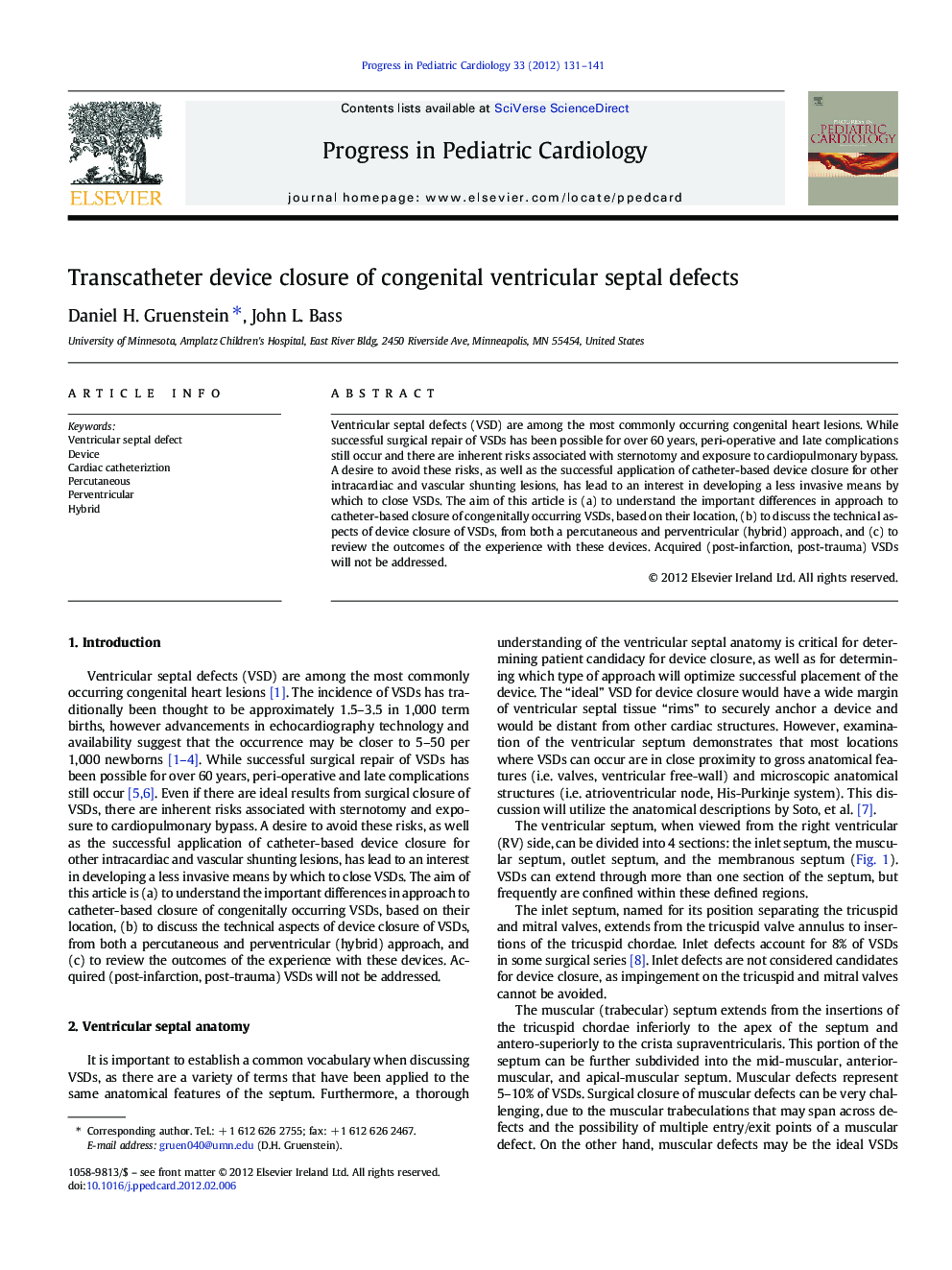| Article ID | Journal | Published Year | Pages | File Type |
|---|---|---|---|---|
| 3007513 | Progress in Pediatric Cardiology | 2012 | 11 Pages |
Ventricular septal defects (VSD) are among the most commonly occurring congenital heart lesions. While successful surgical repair of VSDs has been possible for over 60 years, peri-operative and late complications still occur and there are inherent risks associated with sternotomy and exposure to cardiopulmonary bypass. A desire to avoid these risks, as well as the successful application of catheter-based device closure for other intracardiac and vascular shunting lesions, has lead to an interest in developing a less invasive means by which to close VSDs. The aim of this article is (a) to understand the important differences in approach to catheter-based closure of congenitally occurring VSDs, based on their location, (b) to discuss the technical aspects of device closure of VSDs, from both a percutaneous and perventricular (hybrid) approach, and (c) to review the outcomes of the experience with these devices. Acquired (post-infarction, post-trauma) VSDs will not be addressed.
